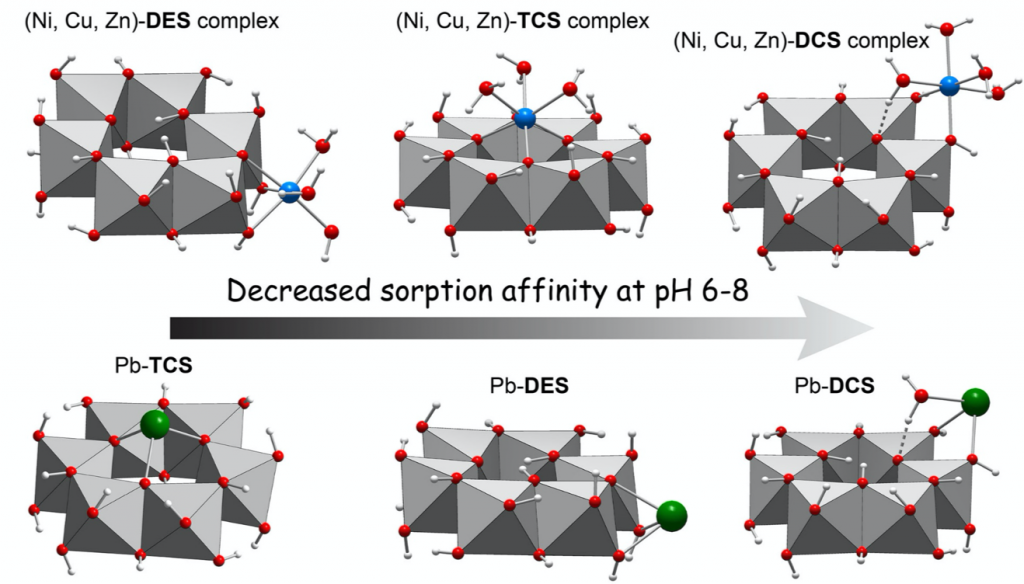The collaboration with Alain Manceau continues! – In our article we have gained insights that is complementary to experiments regarding the adsorption and thus incorporation of metal ions on birnessite.

The collaboration with Alain Manceau continues! – In our article we have gained insights that is complementary to experiments regarding the adsorption and thus incorporation of metal ions on birnessite.

The wonderful collaboration with Deryn Fogg from the University of Ottawa has led to insightful work on the deactivation of a typical olefin metathesis catalyst. Daniel Walden did a great computational job.
As a follow-up and with the contribution of Joshua Sims, we are very happy to announce the publication of “The Impact of Water on Ru-Catalyzed Olefin Metathesis: Potent Deactivating Effects Even at Low Water Concentrations“, once again in ACS Catalysis.
As part of our collaboration H2Lignin with A. Caravaca from IRCELyon, we have published a study on 2-phenoxyethanol electrolysis, leading to the generation of H2. In analogy to alcohol electro-oxidation, the C-C bonds are extremely hard to break, shedding shadows over the prospects of lignin electrolysis at low temperatures.
In our recent work in collaboration with IFP Energies nouvelles we have investigated the atomic structure of amorphous MoS3. Several competing structures have been identified. – We have also evidenced an intriguing ring-structure that is among the most stable arrangements of nano-MoS3.

After quite some time of fiddling, I am very happy (and a bit proud) to announce that the result of our collaborative work on the use of our force field GAL17 in combination with alchemical free energy methods has been published in JCTC. The associated software, SolvHybrid, is now available on GitHub, although for now only the trunk (or our inhouse modified) version of Sander is able to perform the corresponding simulations. This work would not have been possible without the constant energy of Paul Clabaut; he has really driven this development!
Our “Overview”, published in WIREs Computational Molecular Science is now online.
The collaboration with Zhi Wei Seh from A*STAR has once again been very enriching.

The (last?) part of our EPOC-related work in collaboration with uOttawa has been published in J. Phys. Chem. Letters. If you wonder how the surface state of Pt depends on the electrochemical potential and how this surface state influences the oxidation of methane, just have a look at this short paper!
The work of Paul and Ruben on understanding the metal/water adlayers via energy decomposition analysis is now available online in JCP. Capturing the polarization energy is enough to retrieve the complex many-body physics!

The less ordered, densely packed √39×√39 ice-like structure is found to be most stable over noble metal (Pt, Pd, Ag, Au) (111) surfaces, closely followed by the similar √37×√37 adlayer, that is most stable over Cu(111).
Our theoretical elucidation of the electrochemical promotion of catalysis is now available in Electrochimica Acta.
It is a nice piece, resulting from the productive collaboration with the group of Elena Baranova at the University of Ottawa. It can be seen as a follow-up to the study of ethylene oxidation under EPOC conditions.
Nawras’ first article has been published, congratulations!
Revisiting the active sites at the MoS2/H2O interface via grand-canonical DFT
It is a neat little story about the influence of the electrochemical potential and the importance of not forgetting that the hydrogen evolution reaction occurs in water.
